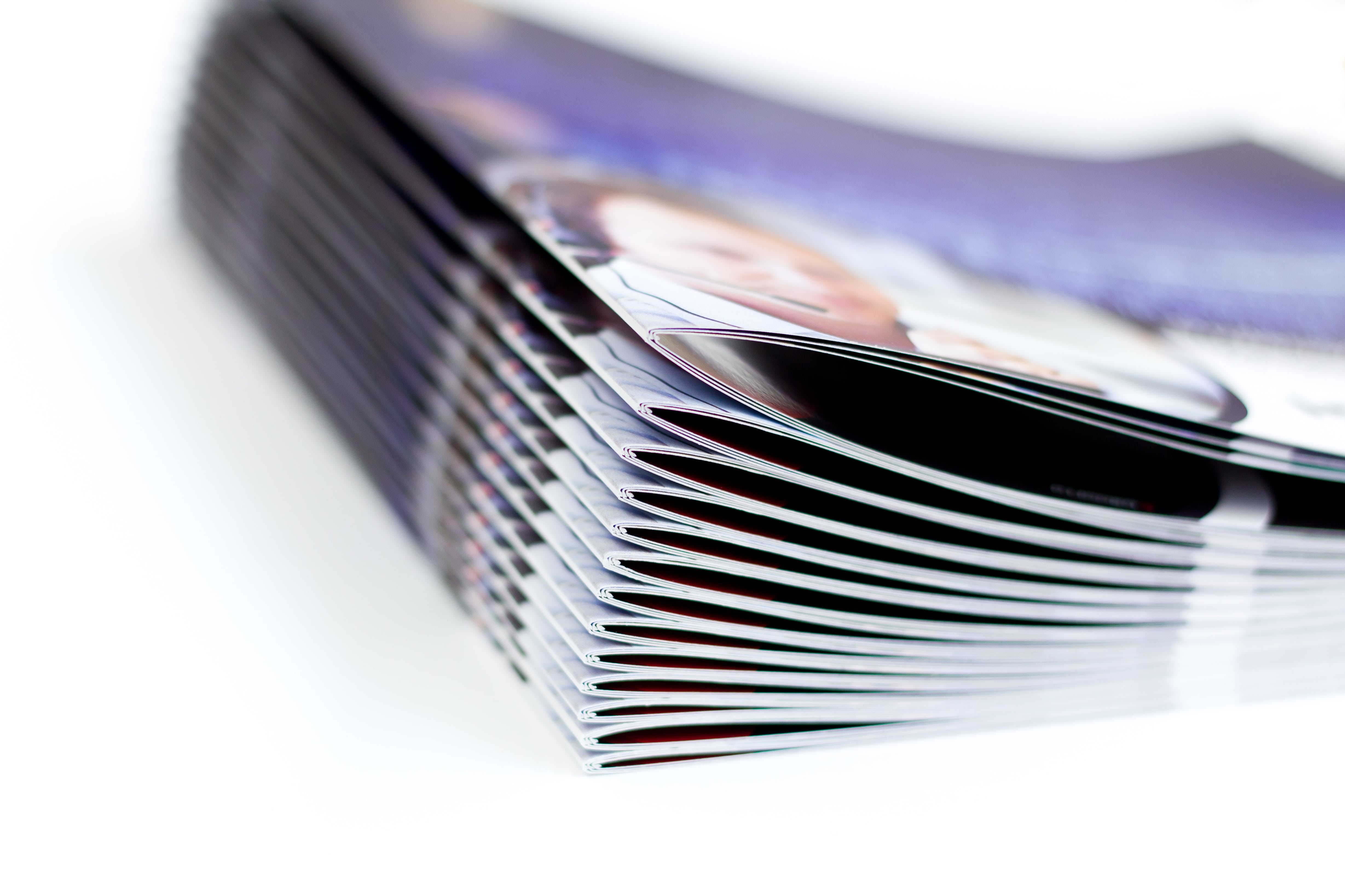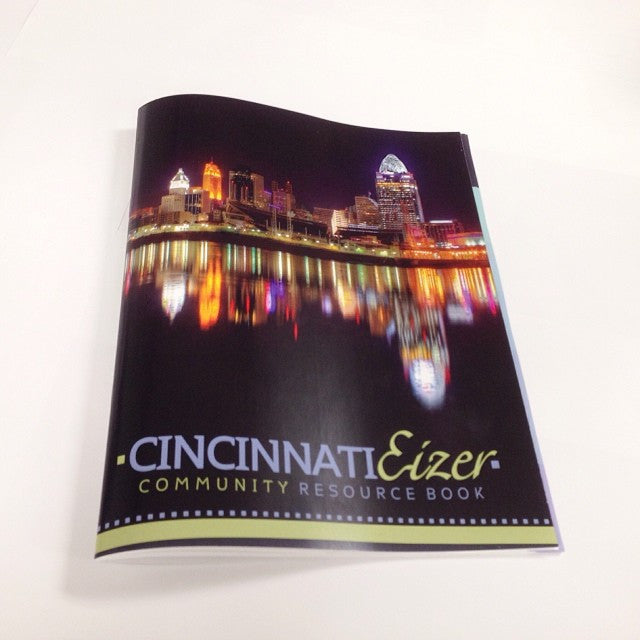The Essential Overview to Recognizing Booklet Printing Options and Techniques
The procedure of brochure printing entails multiple factors to consider that can greatly influence the last product. From picking the ideal style and dimension to understanding the subtleties of binding approaches, each choice plays an important function. Additionally, elements such as paper stock and printing techniques further affect the performance of the booklet. As one navigates these alternatives, it comes to be vital to understand how they adjoin and what that suggests for the overall outcome.
Comprehending Pamphlet Sizes and layouts
When thinking about brochure printing, recognizing the numerous styles and sizes readily available is crucial for achieving the preferred presentation. Booklets can be generated in countless formats, including saddle-stitched, spiral-bound, and perfect-bound, each offering distinct advantages. Common dimensions vary from standard letter (8.5 x 11 inches) to smaller sized choices like A5 (5.8 x 8.3 inches), enabling for versatility based upon web content and target audience.Selecting the appropriate dimension can influence both the format and visitor engagement. Bigger dimensions may fit aesthetically driven material, while smaller sized layouts may be extra easy to use and mobile. Additionally, the number of pages impacts the choice of binding method, as thicker brochures might need sturdier bindings. Eventually, comprehending these aspects permits for an extra tailored technique, making sure that the end product lines up with the desired message and aesthetic, enhancing the overall efficiency of the communication.
Choosing the Right Paper Supply

Binding Methods: Considerations and alternatives
When it comes to binding techniques for booklets, numerous choices are offered, each with distinctive advantages. Saddle stitch binding provides a cost-efficient service for thinner brochures, while excellent binding methods offer a more refined look for thicker publications. Wire-O binding attracts attention for its longevity and convenience of use, making it ideal for documents that call for flexibility.
Saddle Stitch Binding
Saddle stitch binding uses a sensible and affordable remedy for setting up pamphlets, making it a prominent option among authors and companies. This binding approach involves folding sheets of paper in fifty percent and stapling them along the fold line, developing a cool and organized appearance. Commonly ideal for brochures with a lower web page matter, saddle sewing is ideal for publications, pamphlets, and training products. The simplicity of this strategy permits fast production and is usually preferred for advertising things or brief runs. Nonetheless, it is important to note that saddle stitch binding might not be ideal for thicker booklets, as the spine may not hold up under enhanced weight. Generally, it continues to be a dependable choice for numerous printing jobs.
Perfect Binding Strategies
Perfect binding is a widely made use of technique that provides a professional and polished surface to magazines and brochures. This approach entails gluing the pages with each other at the spinal column utilizing a strong adhesive, enabling for a clean side and the capacity to hold a larger number of web pages compared to saddle sewing. Perfect binding is specifically suitable for thicker booklets, such as brochures and yearly reports, where a sturdy, flat back is wanted. Furthermore, it offers the choice for a published cover that can be developed to boost aesthetic allure. Considerations such as page matter, paper weight, and the meant use of the pamphlet should be taken into account, as they can affect longevity and overall high quality.
Wire-O Binding Options
Wire-O binding, known for its resilience and versatility, provides an outstanding choice for brochures that require simple web page transforming and a professional appearance. This binding technique employs a collection of steel loops that hold web pages firmly, enabling them to lie level when open. It is especially appropriate for manuals, presentations, and catalogs as a result of its durable nature. Wire-O binding is available in various shades and diameters, fitting different page counts and thicknesses. In addition, it allows the incorporation of covers and tabs, enhancing the booklet's overall visual. Factors to consider for Wire-O binding consist of the selection of cord shade, the size of the loops, and the extent of personalization desired, every one of which can greatly influence the last product's appearance and performance.
Digital vs. Offset Printing: Which Is Best for You?
When selecting a printing technique for booklets, understanding the distinctions in between electronic and offset printing is essential. Digital printing uses contemporary technology to produce premium prints swiftly and economically, making it excellent for short runs or tasks calling for quick turnaround times. It permits personalization, providing the capability to publish on-demand with marginal waste.In comparison, balance out printing is a conventional technique that masters generating huge quantities with constant top quality. It entails transferring ink from a plate to a rubber covering, after that to the paper, which leads to precise information and lively shades. Offset printing generally calls for longer configuration times and is a lot more cost-effective for larger volumes.Ultimately, the choice between digital and balance out printing depends on job needs, spending plan, and wanted amount. For little, time-sensitive projects, digital may be the very best option, while countered may be more suitable for larger, top notch manufacturings.

Creating Your Booklet: Tips and Best Practices
When making a brochure, careful interest to design, font style option, and color use can considerably enhance its effectiveness. A well-structured design overviews the reader's eye, while appropriate typefaces guarantee readability and communicate the desired tone. Additionally, reliable use of shade can evoke emotions and highlight key information, making the total layout extra impactful.
Selecting the Right Format
Exactly how can one successfully choose the appropriate design for a pamphlet? It is essential to evaluate the booklet's function and target audience. A tidy, arranged format enhances readability and interaction. Utilizing a grid system can assist in straightening components continually, producing a specialist appearance. Additionally, incorporating aesthetic pecking order with varying dimensions and placements of photos and text can guide the visitor's eye and highlight vital information. It is likewise crucial to leave sufficient white area, which prevents congestion and enables far better emphasis. Checking different formats through mock-ups can provide insight into how the design performs in real-world circumstances, making certain that the last product meets both practical and visual demands.
Picking Proper Font Styles
An appropriate typeface can considerably boost the total design of a booklet, enhancing the design and enhancing the content's message. The selection of typefaces need to take into consideration readability, specifically for body text, as it guarantees the details is accessible to all readers. Sans-serif font styles are typically chosen for electronic layouts, while serif typefaces can provide a typical feel in published products. It's advisable to restrict font choices to two or three to preserve visual coherence. In addition, font dimension plays an important function; headings basics ought to be not frustrating however distinct, while body message ought to be comfy for reading. When picking fonts, placement with the brochure's theme and target market is crucial for reliable communication and visual charm.
Effective Usage of Shade
Color functions as an effective device in pamphlet style, forming perceptions and guiding reader feelings. It can stimulate feelings of exhilaration, peace, or trust fund, depending upon the shades picked. Developers must take into consideration shade theory principles, making sure that the chosen scheme lines up with the booklet's message and target audience. Using cozy shades like red and orange can develop necessity, while cooler tones like blue and environment-friendly foster tranquility.Additionally, contrast plays an important role; complementary shades can enhance readability and aesthetic appeal. Consistency in shade use throughout web pages even more enhances brand identity and communication. Eventually, effective color implementation not just captures focus however likewise strengthens the pamphlet's purpose, making it an essential aspect of effective style.
Ending Up Touches: Coatings and Unique Results
While numerous consider the web content and format of a booklet the most vital elements, the finishing touches, such as finishes and unique results, play a necessary role in improving its general allure. Coatings can supply defense and sturdiness, making sure that the booklet endures wear and tear. Matte finishes supply an innovative, non-reflective surface area, while glossy finishes can make shades appear more vibrant and appealing. Special impacts, like embossing or foil marking, include a tactile measurement that can create an unforgettable perception. These strategies can highlight details locations, attracting attention to important info or developing aesthetic interest. Additionally, UV coating can provide a high-shine coating that boosts the overall look.Together, these finishing touches not just boost the booklet's aesthetic however also interact professionalism and trust and attention to information, eventually leaving a long-term influence on the reader.
Expense Factors To Consider for Pamphlet Printing
Comprehending the different price considerations for booklet printing is essential for companies and companies intending to enhance their budget plans. Key elements influencing costs consist of the option of paper, binding, and ink methods. Better products, such as premium paper or specialized inks, commonly enhance the general expenditure. In addition, the size and web page matter of the brochure play a considerable role; bigger brochures require more sources and time to produce.Another essential consideration is the printing strategy, whether digital or countered, as each has its own rates structure and viability for different amounts. Services should likewise factor in style expenses, which can vary based upon complexity and using expert solutions. Ultimately, delivery and handling costs can include in the total amount, specifically for large orders. By assessing these elements, organizations can make enlightened choices that straighten with their monetary capacities while achieving the desired quality in their printed products.
Regularly Asked Questions
What Are the Ecological Influences of Brochure Printing?
The ecological influences of pamphlet printing include deforestation from paper manufacturing, carbon exhausts from transportation, and waste generation from disposed of materials - Booklet Printing. Lasting methods, such as using recycled paper and green inks, can alleviate these impacts
Just How Can I Make Certain Color Accuracy in My Booklet?
To assure shade accuracy in a pamphlet, one must utilize adjusted screens, employ expert color accounts, carry out test prints, and pick high-quality printing services that offer shade matching and proofing alternatives for ideal outcomes.
What Is the Normal Turn-around Time for Booklet Printing?
The normal turn-around time for booklet printing differs depending on the complexity and amount - Booklet Printing. Generally, it ranges from a few days to 2 weeks, influenced by elements such as publishing techniques and finishing requirements
Are There Minimum Order Quantities for Pamphlet Printing?

Can I Publish Booklets in Numerous Languages?
Publishing brochures in numerous languages is feasible. Many printing solutions use alternatives for bilingual or multilingual designs, allowing for efficient interaction. Careful preparation guarantees that develop elements suit image source various languages without compromising readability or visual appeals. Additionally, factors such as paper supply and printing strategies more affect the performance of the booklet. helpful site When thinking about brochure printing, comprehending the various layouts and sizes available is necessary for achieving the preferred presentation. When choosing a printing technique for brochures, comprehending the distinctions between digital and counter printing is important. Furthermore, the size and web page count of the booklet play a substantial role; larger booklets call for more sources and time to produce.Another crucial consideration is the printing strategy, whether electronic or offset, as each has its own rates framework and viability for various quantities. The ecological influences of brochure printing consist of deforestation from paper production, carbon discharges from transport, and waste generation from thrown out products.